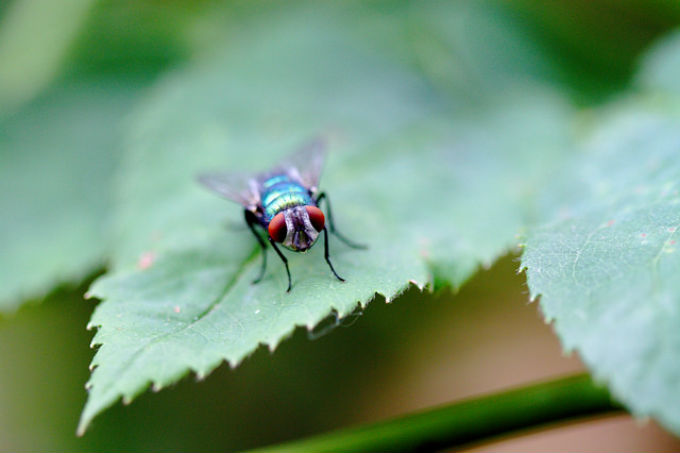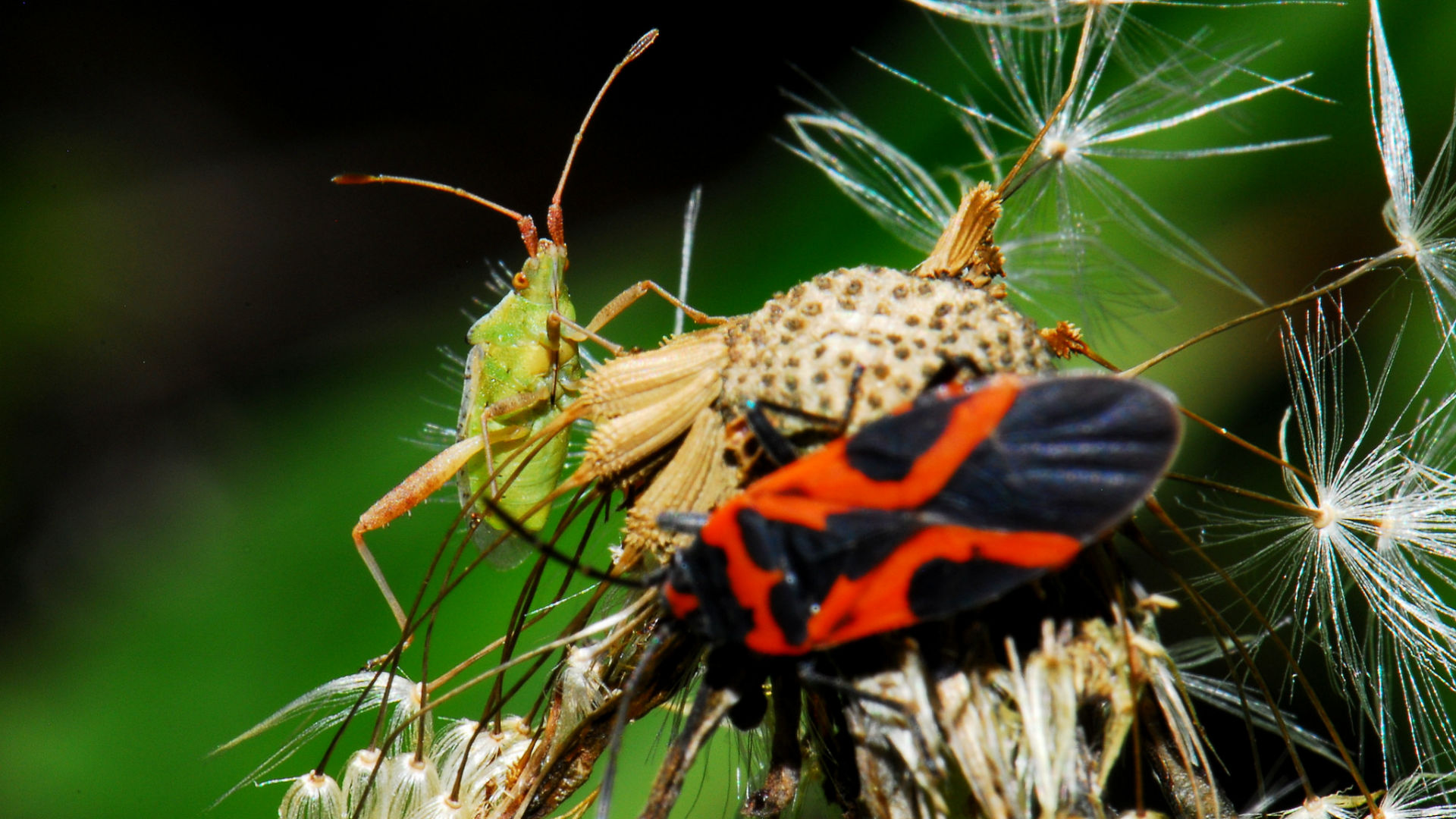Originally published by Ensia.
Widely reported studies this year and last led to headlines globally of an “insect Armageddon.” The real story is more nuanced — but probably just as unsettling.
When Susan Weller traveled to Ecuador to study tiger moths in the 1980s, she found plenty of insects. A decade later, Weller, now director of the University of Nebraska State Museum, returned to conduct follow-up research. But the moths she was looking for were gone.
“Just in that time frame, areas I had collected had been transformed. Forests had been taken out… brand new cities had sprung up. I tried to go back and collect from other historic collecting sites, and those sites no longer existed. They were parking lots,” she says.
Around the globe, scientists are getting hints that all is not well in the world of insects. Increasingly, reports are trickling in of unsettling changes in populations of not only butterflies and bees, but of far less charismatic bugs and beetles as well. Most recently, a research team from the U.S. and Mexico reported a startling decline between 1976 and 2013 in the weight of insects and other arthropods collected at select sites in Puerto Rico.
Some have called the apparent trend an insect Armageddon. Although the picture is not in crisp enough focus yet to say if that’s hyperbolic, enough is clear to compel many to call for full-scale efforts to learn more and act as appropriate.
“I would say the insect decline in biomass and diversity is real because we see things repeated across different sites across different groups,” says Weller. “But is it an Armageddon? That part is more difficult to tease out.”
“We do know we have some declines, some very worrisome declines,” echoes David Wagner, professor of ecology and evolutionary biology at the University of Connecticut and author of a chapter on insect biodiversity trends in the 2018 Encyclopedia of the Anthropocene. “The bigger question is, ‘Why?’” he says. “And that’s so very important. You can’t fix something until you understand what the problem is.”
Unsung Heroes
Many people tend to think of animals as large, furry, likeable creatures. In reality, insects are the dominant form of animal life. Close to a million species have been described to date — compared with a paltry 5,416 mammals. And depending on who you ask, entomologists suspect there could be two to 30 times as many actually out there.
Not only that, but insects are linchpins of the living world, carrying out numerous functions that make life possible.
Insects pollinate a spectrum of plants, including many of those that humans rely on for food. They also are key players in other important jobs including breaking dead things down into the building blocks for new life, controlling weeds and providing raw materials for medicines. And they provide sustenance for a spectrum of other animals — in fact, the Puerto Rico study showed a decline in density of insect-eating frogs, birds and lizards that paralleled the insect nosedive.
All told, insects provide at least $57 billion in services to the U.S. economy each year.
“They’re the unsung heroes of most ecosystems,” says applied entomologist Helen Spafford, who helped write Entomological Society of America’s 2017 position statement on endangered insect species.
Real Problems
It’s unsettling, then, to imagine that insects might be in trouble. But a spectrum of studies, combined with anecdotal evidence, increasingly suggests that things are, in the words of Harper Adams University entomologist Simon Leather, “not how they should be.”
In the 1990s, reports started cropping up around the world of disappearing pollinators. In 2006, researchers reported dramatic declines in counts of moths attracted to light traps in Great Britain. A 2010 international gathering of firefly experts reported unsettling downward trends. In 2017, scientists reported a decline of more than 75 percent in insect biomass across 63 nature areas in Germany between 1989 and 2016. A 2018 census found an ominous drop in monarch butterflies along the California coast. Anecdotal evidence from Australia earlier this year indicates insect declines there as well.
Worldwide, a 2014 summary of global declines in biodiversity and abundance estimated a 45 percent drop in the abundance of invertebrates, most of which are insects. And many individual species and species groups are declining or even being threatened with extinction, from bumblebees in Europe and the United States to fungus weevils in Africa.
“The vast majority of studies that have come out in the last decade are showing a decline in populations or insect species or biomass, and we’re seeing that consistently whether in Germany or equatorial areas or the United States,” says Scott Black, executive director of the Xerces Society, an invertebrate conservation nonprofit. “I think all the indicators point to real problems with insect and invertebrates in decline across the world.”

Mixed Picture
Although these results are disturbing, they’re not definitive. In some cases, they could indicate issues facing specific insect species or characteristics of specific locations rather than an overarching trend. It’s entirely possible that some don’t even prove a local problem: The paucity of moths attracted to lights, for example, could be a matter of selective pressures that favor individuals that aren’t attracted to light.
Nevertheless, there are plenty of reasons to expect declines. Widespread use of insecticides is one obvious one. Others include habitat loss and degradation; declines in or disappearance of plants or animals that specific insects depend on for food and shelter; displacement by nonnative species; air, water and light pollution; the global spread of insect diseases; climate change; and even, says Wagner, nitrification due to fossil-fuel burning.
That said, as humanity’s footprint grows, in some places some insect populations are going up. For example, Leather reports increases in recent years in numbers of moths associated with trees in the United Kingdom, where tree planting has been underway. Changing environmental conditions have led to a proliferation of tree-harming insects such as the mountain pine beetle in North America. And nonnative species such as Japanese beetles in the U.S., Asian hornets in Europe and the polyphagous shot hole borer in South Africa tend to show rapid population rises as they invade new territories.
“It’s quite a mixed picture,” Leather says. “Some insects do seem to be in trouble. Other insects aren’t.”
Spafford, who recently left a faculty position with the Department of Plant and Environmental Protection Sciences at the University of Hawaii to pursue graduate work in public administration, is less equivocal.
“There is some good evidence coming out that there are large-scale declines in numbers of insects and insect diversity,” she says. “My short answer is yes, I do think there’s enough evidence now that we really should be concerned.”
What to Do?
Pedro Cardoso of the Finnish Museum of Natural History and colleagues have pinpointed seven impediments that limit our ability to conserve insects and other invertebrates and suggest a variety of strategies, from improved research protocols to better marketing, to overcome them.
First and foremost, many scientists say, we need to get a better handle on what’s currently out there in terms of species and numbers so we have a baseline for measuring change and a notion of what might need protecting.
Scientists are calling for developing a better sense of trends in abundance and diversity through studies that are repeated over time at the same location.“Insects are both exceptionally diverse and poorly known,” says Trond Larsen, director of the Rapid Assessment Program at Conservation International. His organization is trying to do its share by working to assess insect biodiversity in tropical areas around the world — discovering hundreds of species of insects not previously known to science — which then influences the organization’s priorities around conservation.
Second, scientists are calling for developing a better sense of trends in abundance and diversity through studies that are repeated over time at the same location, resampling in areas where baselines were established decades ago.
“We have estimates, but there hasn’t been a full assessment or even identification of all the insect species out there,” Spafford says. “If a place has not been well studied over a long period of time, we don’t really have good data to be able to draw conclusions.”
Where declines are documented, the next important step is to figure out why they’re occurring. Because insects reproduce quickly and can be affected dramatically by shifts in environmental conditions, it can be a challenge to tease out long-term trends from temporary fluctuations in local populations.
“[We need to] identify where it’s happening, the magnitude of change, who exactly is declining and what the causal factors are,” Wagner says. In fact, he’s planning to shift his own research program to focus more on finding historical data sets and repeating surveys to assess changes over time.
Public Role
Meanwhile, conservationists are also calling for boosting awareness of the value of insects in the eyes of everyday people.

To many of us, insects’ downsides — bites, stings, disease, crop loss — have led to a “good riddance” mentality. We need, advocates say, to recognize the overarching ecological benefits insects offer, and work to protect them in the same way we protect rhinos, grizzlies and backyard birds. Strategies such as providing habitat corridors and “stepping stones” and managing public lands in ecologically friendly ways, for instance, can help relieve other stresses on insects as climate change adds challenges due to changing environmental conditions.
“One thing about insect or invertebrate conservation that’s pretty neat and one of the reasons I’m heartened [is that] anyone can take action,” Black says. “We should be conserving polar bears and Bengal tigers and wolves, and people should fund groups that do that — these charismatic megafauna are really important as well.
“But the neat thing about insects is, anybody can help them. If you have a little yard, if you’re a farmer, if you’re a natural area manager, if you work at a department of transportation, you can work to manage plants for pollinators. We can do this across the landscape and we need to.”
In the long haul, Spafford sees education as critical. “I think training teachers to better understand the role of insects in systems and such would be really helpful, and then teachers would hopefully share that information with students,” she says. “And then just helping the general public to understand the importance of insects in their daily lives, not just [as] pests but as important service providers.”
Wagner says there is a “huge, huge” role for citizen science to contribute to assessing the status of insects around the world, especially species that are seen as desirable or attractive, which are most likely going to be of interest to (and identifiable by) nonscientists.
“It’s clearly one of the largest data generators,” he says. “There’s no way the scientific community can fund studies all the way across the planetary surface and monitor all insects. The only way we can hope to get reasonable data on the poster children type of insects — bees, butterflies, moths, some of the more charismatic species — would be to harness citizen scientists.”
Some such efforts already exist. The Xerces Society lists several citizen scientist opportunities, including tracking bumble bees or dragonflies in North America, counting overwintering monarch butterflies in California, and watching for breeding monarchs in the western U.S. Firefly Watch also welcomes citizen participation in firefly counts.
“If people have the skill set and the time and the passion,” Spafford says, “I think it really could help fill a critical gap.”
Even as further reports of declines emerge, Black emphasizes, so do opportunities for doing something.


